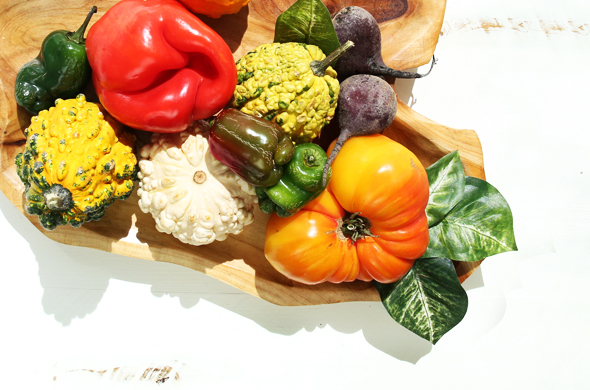The average American throws away 36 pounds of food a month, according to the USDA. That’s enough to fill the 90,000-seat Rose Bowl stadium with foods – much of it perfectly good, nutritious stuff.
So why do we toss it? Maybe that banana has a few too many bruises. Or that chunk of cheese has something funky and blue growing on it. Farmers and grocery stores are forced to regularly chuck enormous quantities of produce, simply because it doesn’t look pretty.

So we were intrigued when we learned about the @UglyFruitAndVeg campaign, a movement dedicated to fighting food waste around the globe. “Ugly” produce – fruits and vegetables that are bruised, wrinkled or otherwise imperfect-looking – are perfectly healthy and nutritious, the campaign assures. They’re “just a little bit bigger or smaller than the norm and sometimes misshapen, but very rarely hideous or ugly.”
Indeed, the @UglyFruitAndVeg campaign confirms that about 20 billion pounds of produce gets wasted due to the strict cosmetic standards of large grocers. These grocers’ standards include requiring all carrots to be long and straight, every apple to be perfectly round, and forbidding potatoes from having legs.
So what can you do to fight the stigma facing ugly produce? We have a few suggestions for you:
1. Don’t be afraid to buy that sad-looking turnip or twisted cucumber at the market. Those guys need love, too, and there’s nothing wrong with them. Remember, beauty is on the inside!
2. Visit @UglyFruitAndVeg’s Supermarket Directory to learn which stores near you are selling ugly produce near you.
3. Google Inglorious Fruits and Vegetables to see some awesome images of produce with serious personality – two-headed apples, navel oranges with major outie belly buttons – and get inspired. The photos are part of a campaign by Intermarché, a large supermarket chain in France, which decided to sell ugly produce for a discount. We especially like their ad that reminds us, “A grotesque apple a day keeps the doctor away, as well.”
4. If you live in or near Dorchester, Massachusetts, shop at Daily Table, a not-for-profit retail store (opened by the former president of Trader Joe’s) that recovers food from supermarkets, farmers and food distributors that would otherwise be tossed out (totally safe to eat but maybe not the best-looking or approaching its “Use by” or “Best by” dates) and sells it at a reduced price.
5. Watch the new TED-Ed video, “Are spotty fruits and vegetables safe to eat?”, to learn how to safely discern which peculiar produce is perfectly fine, and which might actually belong in the trash.
6. Pick up the funkiest looking fruit and vegetables you can and whip up one of our famous smoothies. Smiling peaches are perfect in this Peach Kefir Smoothie Bowl, and leggy sweet potatoes taste divine in this fall-favorite Sweet Potato Pie Smoothie. Or add your favorite grocery store finds to a cup of your favorite Lifeway Kefir for a custom blend that’s not only good for your body, but good for the environment, too!
At Lifeway, we’re dedicated to sustainability and leaving the planet in a better state than we found it. For more information about our sustainability commitment, click here.
Do you love ugly fruit? Let us know! Snap a photo and tag us on Facebook, Twitter, Instagram or Snapchat and we’ll respond with a smoothie blend we think you’ll love, using your precious produce!